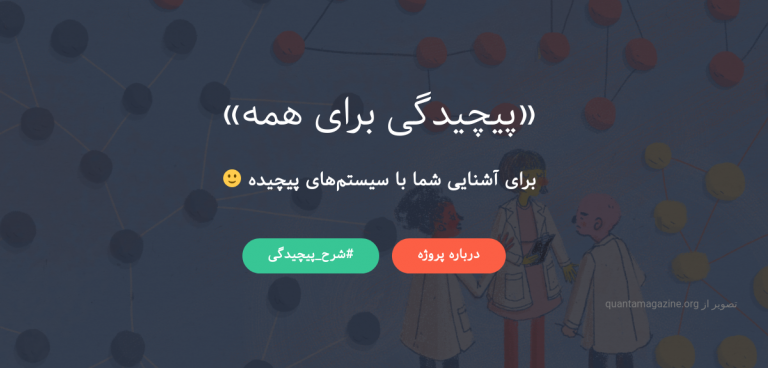Currently, I am a Ph.D. candidate at the Department of Computer Science, School of Science, Aalto University.
At CCNSD, I used to work on an inference problem, a topic at the interface of physics, computer science, and systems biology. My project was to use physics-inspired methods to find structure data sets and determine when these structures are statistically significant. We were developing physics-based algorithms which could point to hidden connections between spatially disparate nodes of a network!

Contact/Follow me:
- ResearchGate: Abbas K. Rizi
- Gmail: abbascarimi
- Twitter: @abbas_k_rizi
My Blogs:
- Sitpor.org: https://www.sitpor.org/author/abbas/
- Medium: https://medium.com/me/stories/public
- CCNSD Blog: https://ccnsd.ir/author/abbas/
FIELDS OF INTEREST
Complex Systems, Network Science, and Data Science
Projects at CCNSD
EDUCATION at SBU
- Master of Science in Physics, Complex Systems & Nonlinear Dynamics: 2016-2018, SBU
- Bachelor of Science, Solid State Physics: 2012-2016, SBU
RESEARCH EXPERIENCES at CCNSD
- My thesis: Inferring Interaction Matrices of Evolving Complex Networks, 2017 – 2018, Center for Complex Networks & Social Data Science (CCNSD), SBU, Tehran, Iran
- Differences between the collective behaviors of genes in the normal and cancerous cells from the perspective of Inverse Statistical Physics, 2018, CCNSD, SBU, Tehran, Iran
- Dynamics of Growth in Social Networks in Accordance with Preferential Attachment and Tension in the Network/ Supervised by Dr. G.R. Jafari, 2015, CCNSD, SBU, Tehran, Iran. Accepted as a poster in the “8th Conference on Statistical Physics, Soft Condensed Matters, and Complex Systems”
About My Master’s Thesis
Almost all the studies about cancers are based on finding effective genes for each cancer and neglecting the collective behavior of the genes emerged from the regulatory effects of them on each other in a cell. In our study, we have considered each gene as a spin in a spin-glass (multivariate Gaussian) model and the gene-gene interaction as the coupling between each pair of the spins. By applying the principle of max. entropy, we have inferred the network of interactions from RNA-Seq data of genes expression levels in the case of Breast Cancer. This network is a signed weighted network, so according to the framework of Balance Theory, we could assign energy to the triads and the entire network.
Our results show that (i) for each type of triad in the network, whether frustrated or relaxed, their energy distributions are of a power-law form. Besides, (ii) the energy pattern in the normal case is more localized and more assortative. (iii) The energy level of the normal network is higher than the cancerous one, meaning the normal cell has more tendency toward frustration. From a dynamical point of view, it seems that there are some collective modes in the cancerous cell which we are interested to study in the future.
TALKS, SEMINARS & WORKSHOPS
- “The Story of Complexity: Why more is different?!” – Sar Conference. December 2018, Iran Science and Technology Museum, Tehran, Iran
- “Collective Behaviors of Genes in the Normal and Cancerous Cells from the Perspective of Inverse Statistical Physics” – Tehran School on Theory and Applications of Complex Networks. August 2018, Shahid Beheshti University (SBU), Tehran, Iran
- “Can Physicists Model Social Networks?” – 3rd Link Symposium, August 2018, Shahid Beheshti University (SBU), Tehran, Iran
- “What do Physicists and Complexity Scientists do?” – SBU Physics Open Day. December 2017, Shahid Beheshti University (SBU), Tehran, Iran
- “The 1st Workshop on Complexity For Non-Expert People”, August 2017, Allameh Helli High School, Tehran, Iran
- 1st TEDxYouth- Tehran, a short talk: “How to develop the Entertainment part of TED”
TEACHING & SCIENTIFIC EXPERIENCES at SBU
- Physics of Complex Systems TA – Shahid Beheshti University (SBU)- Spring 2018, SBU, Tehran, Iran
- Statistical Mechanics TA- Shahid Beheshti University (SBU)- Fall 2017, SBU, Tehran, Iran
- Physics III TA – Shahid Beheshti University (SBU)- Winter 2016- Spring 2017, SBU, Tehran, Iran
- Juror – 8th Persian Young Physicists Tournament – 2015, Kharazmi University, Tehran, Iran
- Physics III TA – Shahid Beheshti University (SBU)- 2013 – 2014, SBU, Tehran, Iran
SCIENCE COMMUNICATION & OUTREACH, MAGAZINES & WEBSITES

complexity.sitpor.org: Science Writer, 2019 – Present
“Sitpor.org”: Science Writer and Journalist, 2013 – Present
@ Shahid Beheshti University (SBU):
- Quanta Magazine: Science Writer 2014- 2017
- Salam Magazine: Popular Science Writer 2015 – Present, SBU, Tehran, Iran